The Sherman Of The Future: So Many Very Interesting Technological Marvels Almost Made It Into The Sherman
This is a long one guys, but well worth the read if you like geeky old technology stuff.
The US Army was always looking for ways to improve the basic Sherman tank. Some of these didn’t pan out because they just were not that much better than the basic M4, or the US Army had no interest, or the war ended production of the Sherman before an improvement could be fully developed, or in some cases, just added to the production lines. These ranged from whole new tanks based on the M4, like the T14, or in some ways like with the T1/M6, to improved guns, engines/transmissions to aiming devices.
Let’s start with Armor: Add-on kits, they got developed but were never used.

Bolt-on armor kits: CDA was asked to develop a set of bolt-on armor for the Sherman, there are pictures of wooden mockups, but this program was canceled before the second gen large hatch hulls started production. At this point, the best source for info on this program is R.P. Hunnicutt’s Sherman. He does not note why it was canceled. It seems like with the success of the M4A3E2 Jumbo, and it’s only marginal effect on the reliability of the automotive components of the Sherman, this would have been a hit with the troops.
Up-armored differential covers: There was another program to improve the armor of the early differential covers. Both the early three-part bolt-together designs and the early one-piece cast designs, were found to have areas more vulnerable to penetration than the rest of the differential cover. They came up with add-on armor for each type. After testing these kits were found to be good enough to make the differentials the best protected front area of the tank after installation. The Army approved them, but no evidence of any being used has been found. The final production cast differential cover was improved and would not have needed these kits. That may have been the reason the kits didn’t get used since they could just use the ultimate production casting when doing rebuilds.
Plastic armor and spikes: When the threat of AT sticks like the panzerfaust become more prominent, an add-on armor kit made from called the HCR2 plastic armor kit was developed. It was made from a mixture of quartz gravel and a mastic compound made from wood flour and asphalt. It was held on by cables and could be jettisoned with ease. The armor from this kit protected the Shermans turret well, but sponson penetrations could still happen. It also offered a little extra ballistic protection. It also did not cover the front of the hull or turret.
Another attempt to defeat shaped charged weapons involved installing spikes in lengths varying from 7 to 8 inches all over the armor. The idea behind this was to break up a heat warhead before it could detonate properly. Testing on this continued after the war.
Now let’s talk about improving the tanks less passive defenses: Improved Machine Guns and Flame Projectors!
The vulnerability of the Sherman, like any other tank, to close infantry assault was a problem the U.S. Army was always looking to solve. This is why the Sherman prototype retained the .30 caliber mini-turret on the commander’s hatch. This was a hard to use and unpopular cupola, that did not make it onto any production Shermans, but that wasn’t for lack of trying on the US Army’s part.
Improved ball mount with sight: The first thing we will cover is the improved ball mount for the co-driver/BOG. What they did was come up with linkage at connected the bow mounted .30 caliber machine gun to the gunner’s periscope. The co driver’s periscope would have a telescopic sight much like in the gunner’s periscope. The linkage and sight allowed much more accurate use of the bow-mounted machine gun. Only the cessation of production on the Sherman stopped this one. It would have been useful if we had to invade Japan.

M3 grease gun adapter: Another interesting defensive device they came up with was a special adapter for the M3 grease gun that allowed the gun to be hooked up to a curved barrel extension fitted to a standard rotating periscope mount. Then a special periscope with sight could be installed and the M3 fired and aimed from inside the tank. It was found to be accurate enough to engage targets within 33 yards of the tank. I suspect this one didn’t make it into production because it seems like more trouble tank it would be worth, but it is still an interesting idea.
Co-ax M2 and M1919: A more conventional way was the installation of an M2 .50 caliber Machine gun, alongside the .30 caliber M1919 machine gun, mounted coaxially with the main gun. This would have worked out better if one of the advanced guns mounts using a concentric recoil system had made it into production. I’ll cover these mounts later in this post.
The T121 twin machine gun mounts: This mount replaced the all-around vision cupola on the commander’s station with this rather large twin machine gun mount. The mount could take the M2 or M1919. This was a remote power turret and could be operated without being exposed. This mount missed the war, and development continued on it post-war. It was very tall, almost as tall as the Sherman turret by itself.
Fragmentation grenade mounts, mines, and pipe bombs: The Army decided to try mounting these on tanks and test how they would work to combat close in enemy infantry as a kind of last resort weapon. This did not work very well and only the grenades were found to have an effective fragmentation effect. They all risked damage to the tank so they were dropped. Shielding to protect the tank made them even less effective. None of these worked as well as having close infantry support, and the idea was dropped.
The Scorpion/Skink anti-personnel flame projectors: This might have seen use if the war had gone on. This is just the type of thing to use on Japanese suicide troops if they have scared or killed off all your close infantry support. This system had four self-contained, phosphor based, flame projectors mounted at each corner of the tank. Each one could let off 20 to 30 bursts of the flaming phosphorus in a fan from each device, giving great coverage all around the tank. They could be fired off individually or all at once from inside the tank.
Now let’s talk about two vehicles that almost made it to production: The M4 Improved and T14.
The M4 Improved or the idea behind an improved M4 started just about as the time the first production Shermans were rolling off the line. The proposed new tank design that came along was very interesting but not deemed enough of an improvement to change up the production lines.
Since the tank didn’t make it into production, you would think it would be hard to have an idea what one would have looked like. Normally that would be the case, but the game World of Tanks has added the M4 Improved as a premium tank, and they did a beautiful HD model for it.
The proposed M4 I would have used the same M3 75mm gun, with a welded turret, and an improved hull with thicker, sloped armor. It also used a modified version of the M6 heavy tanks suspension, a complicated precursor to the HVSS suspension installed on late production Shermans. It would have used the 625 horsepower Wright G200 motor. Considering the US Army would have just been getting their hands on their first Soviet T-34, I think you can see the influence the T-34 had on the M4 Improved. The wide tracks and extra slope in the side armor being the most prominent.
Even though the improved Sherman had some big flaws, like putting the gas tanks under the turret floor, many of the improvements would be refined and make their way into the later improved Shermans. The suspension is clearly the father of the HVSS suspension, and the tracks probably showed the advantages of center guided tracks over end guided, at least on suspension that wide.
The T14 Heavy tank: They even made a few of these things.
On March 30th, 1942 representatives from Chief or Ordnance, Aberdeen Proving Ground and the British Tank mission had a conference to discuss tank stuff. The need for an assault tank was established at this conference, pushed for by the British. The US Army had no interest in an assault tank at that time. It was decided the US and British would each produce a pair of pilot tanks, and then the better of the two would be put into limited production. The Brits would go on to produce their assault tank on the Cruiser VIII, and the US would use the M4 as the basis for theirs.
By June they had finished the requirements, design, and wooden mock-up, and American Locomotive Company was contracted to build two real tanks. Pilot 1 was finished in July of 43, and the second one was done a month later. The pilot tanks used nearly the same suspension that was proposed for the M4 improved the horizontal volute spring suspension out of the M6, and the same M3 75mm gun the standard M4 carried. It also carried an M2 .50 caliber machine gun in the bow and a 1919 coax with 75mm gun. It would have also had either an M1919 or M2 for AA use mounted on the commander’s hatch.
The Tank used a Ford GAZ V8, a slightly uprated GAA. Other than the motor, and a final drive gear ratio change, the automotive components were standard Sherman fare. The tank came in at 47 tons and had a pretty good armor. The Armor was much better than the standard Sherman but not as good as the later Jumbo, and there was really nothing the US Army found interesting about the tank. The design was supposed to have the provision to take bigger guns, and it had the same 69 in turret ring as the Sherman, but it also had problems.
It was a dog, the GAZ had trouble moving the 47 tons around. The track system was not very good at this point. Tracks were easily thrown in testing, the tanks armored skirts made getting the tracks back on a pain. Even with the wide tracks, it wasn’t very mobile. It did have a scope for the BOG to aim his gun with, so it had that handy feature going for it.
Pilot one was shipped off to Fort Knox for further testing, and pilot 2 was sent to England. It is still there, and it seems to be in ok condition. It’s at the Royal Armored Corps Tank Museum at Bovington Camp in Dorset. None ever saw any kind of combat, and the program was canceled in 1944 after no one showed any interest in the tank.
Practically space-age improvements that almost made it: Sherman advanced gear, multi-axis stabilizers, better gun recoil systems, better tranny and motors.
Concentric recoil systems: The Army had seen how good a concentric recoil system was from the one used on the M24 Chaffee. Late in the war, they had Rock Island Arsenal working on a similar mount for the 76mm M1A2 gun. A normal tank gun recoil system has a pair of cylinders on both sides of the gun to absorb the recoil energy of the gun. These systems are pretty bulky. A concentric system uses one larger hollow cylinder and the gun is mounted inside it, this works better and saves space, it was named the combination mount T103. There wasn’t much of an advantage in combat, but it would have allowed more room in the turret for other gear and ammo. It also would have left room for the M2. 50 Caliber machine gun being mounted along with the regular co-ax gun. This system was being tested and was doing well, when the war ended, ending any chance of seeing the mount on new production Sherman tanks.
The rigid gun mount: Yeah, just what it sounds like, the tank is the recoil system.
The rigid gun mount: A rigid system has a lot of advantages; it takes up way less room in the turret. The gun doesn’t retract into the crew space on firing making it safer, and you don’t need any kind of recoil guard. A rigid system is probably lighter too, but the mount has to be pretty beefy to handle the loads. They designed the gun mount to take both the M3 75, and M1A2 76 guns, and it was tested with both.
The gun was mounted in a lightweight turret, and then onto an M10 hull. Test firing showed the stabilizer and turret race bearing took no damage, but the turret hold down bolts had stretched, and some threads were stripped. Larger stronger bolts would solve that problem, and when installed in the heavier Sherman turret, would absorb the recoil better than the lightweight turret it was tested on.
Can we all guess what killed this one off? Yep, the end of the war, boy, if the Japanese had held out, they would have been really sorry.
The two-axis stabilizer: Two axis stabilizers almost made it in.
The Army had seen through battle experience crews trained in the use of the Shermans stabilizer had an advantage over the ones who didn’t. Unfortunately, during WWII it was all to common to find units who were not in the systems use. So a very advanced system, something the Germans could not match during WWII, often went unused because of poor training.
The late production stabilizer in Shermans was simplified and easier to use. Experiments at Fort Knox found there was some backlash in the system, and they solved it at first with weights, and then later with a minor modification on how the stabilizer worked.
Once the elevation stabilizer was improved, the Army started to look into and azimuth stabilizer. International Business machine had a design and it was tested at Aberdeen in late 43. At first, the design did not work well, but after a series of modifications, they got the system working well enough to test. At the same time Ordnance came up with their own design, using off the shelf components, and it was ready for testing around the same time.
During the testing, they used M4A3 75 tanks, a standard tank, and then one with each IBM and ordnance systems. The crews would be rotated through all three tanks to eliminate crew experience in one tank changing the results. The IBM system worked better than the ordnance system, but the ordnance system was much easier to adapt to the Sherman already in the field.
If you sensed a theme here, then you know what’s coming, the war ended before any of these two axis systems could see combat use. The Ordnance system was fitted to a 76mm Sherman and testing of the system continued after the war, comparing it to the Vickers system the Brits came up with. The Ordnance system needed to be beefed up and made more resistant to vibration, and what was learned here was probably passed on to later designs like the M26.
Better Motors: Motors that never had a chance or almost made it
Chrysler’s A65:
This was a huge V12 that Chrysler designed on their own dime. It was 1568 cubic inches, was gas powered and made 650 gross horsepower, and 580 net HP, and was water cooled. A test installation was done to an M4A4, and they had to lengthen the hull another 9 ½ inches to fit the mammoth motor. The tank only weighed around 500 pounds more with the motor in. The tank was a real hot rod and climbed hills better and out accelerated the standard M4A4. Even after dropping the final drive gear ratio from 3:53:1 to 3:05:1, and it still out climbed and accelerated the standard M4A4 and even the M4A3.
After 400 miles of testing, the engine was pulled and examined and found to be in perfect running order. The project closed with the Army recommending further study on engines in this power range.
General Motors Corporation V8-184 diesel engine:
GM developed this as tank motor, it was based on a large marine diesel cut in half, and was still very large. This V8 diesel motor came in 1470 cubic inches and 3750 pounds. It made 600 gross horsepower at 1800 rpm and 1910 foot-pounds of torque at 1000 rpm. The motor ran at a 16.8:1 compression ratio.
One test versions of this motor were installed in an M4A3 hull and tested. It was called the M4Y at first, then when ordnance started testing it, it was re-designated and M4A2E1. The tank had to be stretched 11 inches and lost a little ground clearance to a bulge in the belly needed to fit the engine. They put 2914 miles on this test vehicle and it was another hot rod. It had much more power than any other Sherman but the A65 powered one. Some minor mechanical failures happened during the test, but nothing major or out of the ordinary that couldn’t be fixed. Nothing needed any kind of major redesign to support the power of the motor.
Much like with the A65, a diesel in this power range was going to be studied due to the success of the M4A2E1.
Caterpillar D200A air Cooled Radial: The motor that made it into 75 Shermans
This motor used a large number of Wright G200 components and modified it with a bunch of Caterpillar parts. At some point, I may go into detail on how they did this, but for the moment, if you really want to know, the section in Hunnicutt’s Sherman book starts on page 167.
This motor made 450 horsepower at 2000 rpm and 1470 foot-pounds of torque at 1200 rpm. Good, but not great. It did perform well enough to get into production, but after only 75 M4A6 tanks production was canceled and the tank was regulated to stateside training use. This motor was no hotrod power plant like the other two, but I had to fit it in somewhere.
♠♠♠
A few other diesel designs were tried, but none worked as well as the V8-184, and they were all dropped early in their design period. There is also one motor we have not covered, the motor that powered the M4A6, the Caterpillar G200A air-cooled radial.
One thing to note about all the high horsepower Sherman tanks, none of their other drive train components saw major modification, because they did not fail. So a transmission and final drive designed for a 400 horsepower 30-ton tank, had no trouble taking 650 horsepower from the monster motors above, or any trouble handling the 42 tons of the M4A3E2 Jumbo. To me that says, well designed, in that it was very overbuilt, and lasted a very long time. The Transmissions and final drives just kept on working, and all the post-war Sherman modifications used the same old tranny and final drive. That’s the kind of engineering that people should consider to be great. Not some German, garbage tank, named after a cat, which broke down every 150 kilometers.
Now let’s talk about transmissions, final drives and other automotive tidbits: The stuff that makes the tank go.
Like with the motors, many different transmissions and final drives were experimented with. Nothing was so groundbreaking it made it into production, but much of it helped develop transmissions and final drives in later tanks. There were other automotive odds and ends we’ll cover too. Starting with …
The high-speed reverse transmission: This transmission modification came out of the desire to speed up the Shermans reverse speed. The reverse gear ratio was 5.65:1. This was almost as high as the ‘Granny’ gear used in first gear. This meant the Shermans speed in reverse was rev limited to a 2 to 3 miles per hour max in reverse. The tank was geared this was so it could climb a hill in reverse if it had to. There are cases on tight roads or trails in forests or cities you can’t get the tank turned around.
The first thing they tried to solve this was raising the gear ratio, and this did speed up reverse, but it made it extremely hard to climb any hill or incline.
The way they solved this problem was by adding a secondary planetary gearbox to the back of the transmissions. This allowed the whole transmission to be reversed, allowing all five speeds to be used backing the tank up. This new add-on gearbox including a new low-level oiling system that reduced the oil capacity from 43 to 20 gallons. This modification lowered the operating temp of the tranny and transmitted 25 more horsepower to the sprockets.
The drive shaft mounted generator had to be moved and the drive shaft had to be shortened, but that was the extent of the modifications needed. The shorter drive shaft also worked better, deflecting less, so the universal joints lasted longer. After testing the transmissions for nearly a year they were enthusiastically endorsed as far superior to the stock unit. Can you guess why these wonderful transmissions didn’t make it into the Sherman? You guessed it, the war ended and Sherman development and production stopped.
Next up, automatic, or semi-automatic transmissions, because driving a stick is hard:
The Spicer 95, General Motors 3030B Torqumatic, and the Model 900T were all considered for use in the Sherman. The Spicer unit was in testing as the war ended. The 3030B was discontinued by GM before it could be tested. This was the transmission used in the T20 and T20E3. The 3030Bs replacement was the 900T, but it was in high demand from the M18 Hellcat program. They went back and used Spicer 95s to test the concept. By mid-1944 GM was able to more than handle demand from the M18 program and was able to furnish test transmissions. Two M4A3 tanks were modified and re-designated M4A3E3. They were then sent to Aberdeen Proving Ground for testing against the Spicer 95 equipped M4A1E3 and M4A3E1 from the early tests. The tests were promising, but the end of the war and the cross drive transmission in the works really killed this one off.
The Cross Drive Tranny/Differential: Work on this new type of transmission/final drives started in early 43. What would be developed from it would be the standard transmission for post-war US tanks. It was designed for not just use in the Sherman but later model tanks as well.
Model EX100 Cross Drive Tranny: This was the first cross drive tested the US and it went into an M4A3 Sherman. The installation in the Sherman required a large hole to be cut in the upper part of the Transmission cover, and a large bulged armored cover was placed over it, to fit the new transmission. This cover was called the “manhole cover”, by engineers and the tank maintainers. The was an automatic transmission using a torque converter, with electric steering and braking, and all in a much more compact unit than the Shermans current transmission/final drive setup. There were of course problems, and since work on this started late, when they solved the problems, it was no longer for use in the Sherman.
Suspensions: The ones that didn’t make it, I might throw a bit in about wider tracks here too.
Seemly like every other part of the tank, there were extensive tests of various types of suspension on the Sherman. When we talked about it before we only covered the suspension that made it into production.
Early HVSS: This was an attempt to increase spring life but used the same width track. This was also the suspension used on the T20, T22, and T22E1. These units had shocks in the front and rear bogie units, and they made the ride more smooth and had a favorable effect on gunnery and overall ride. It did not, however, offer enough improvement for any slowdown in the production lines so it was never mass produced.
Christie Style: A heavily modified version of a Christie type suspension was tried on one tank. The springs were installed on armored boxes under the sponsons but outside the hull. It showed it was feasible, but no one was really interested. Christie suspension may be the most overrated suspension for a tank ever.
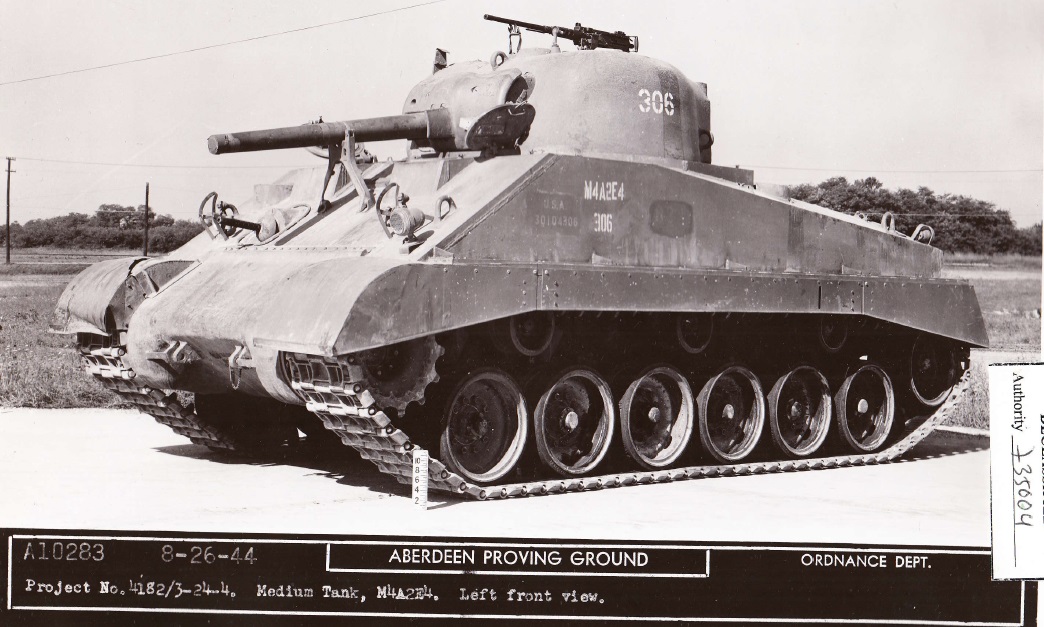
Torsion Bar: In March of 1943, Ordnance recommended a design and construction of a Sherman tank with wide tracks and torsion bar suspension. This type of suspension had been seen on German tanks like the PIII and Stug, Russian tanks like the KV series. Two M4A2E4 tanks were produced for testing. These tanks borrowed a lot from the T20E3 since it was getting a torsion bar suspension a too and it would use the same 24-inch wide track. The suspension offered few advantages over the HVSS system that reached production and the test vehicles had a lot of problems with things breaking. It did provide valuable information about the torsion bar suspension that would go on to be used in later tanks, and it had a very low 10 psi ground pressure.
World of Tanks gave the in-game version of this tank away to the North American Beta testers when the game went live, and it’s always been one of my favorite in-game tanks.
Leaf Spring: Yeah, just like what it sounds, paired leaf springs, six per side and it didn’t work well. It didn’t go far either
T16 Halftrack truck “Centipede”: This suspension was overloaded and didn’t work well, and looked really odd.
Heavy Tractor T22: Looked a little like a combo of the early VVSS suspension and late HVSS, but overloaded and it did not go anywhere.
Odds and ends: Weird stuff I couldn’t fit anywhere else.
This section is going to cover the numerous odds and ends that don’t fit elsewhere, anything from the proposed crew compartment cooling system to the auto-mapping system etc.
Let’s start with…
The Odograph: This was an early auto-mapping/navigation system that used a magnetic compass and data from the speedometer drive to keep track of the movement of the vehicle on a chart. This worked well enough in a jeep, but all the steel of the tank messed with the magnetic compass. Once we were no longer fighting in the desert where navigation could be troublesome support for this program fell off. They installed this in the M4A1E2 and had it working, showing just what 40s tech could do. This project led to further development of magnetic compasses for the Sherman and tank use in general, so the program was not a waste of time.
The crew compartment cooling system: There was a project to put a crew compartment cooling system on the Sherman. This was very early in the tank’s production, and an M4A1 was selected as the test vehicle and redesignated to M4A1E2. The lined the interior with insulation and put an evaporative cooling system in. The system did not work all that well, and demand for it dropped off when the fighting moved out of the desert. The project languished and was eventually canceled.
The infrared night driving system: The infrared night driving system was tested in in 1942; the system consisted of a set of infrared head lights, which could not be seen by the naked eye, and an infrared detecting viewing device that replaced his periscope for the driver. The system worked, but not well enough to see any kind of service use. It would be another decade or so before anyone produced a reliable system. The US and Russians tried them out first and very late in the war, the Germans came up with a system like it, that they quickly dropped after tests.
The US actually had a man-portable version of this that could be mounted on a rifle-size weapon. Both systems were still considered experimental when the war ended.
Sorry this section ended up being so long, and I didn’t include everything, I had to stop somewhere after all. 4757 words.





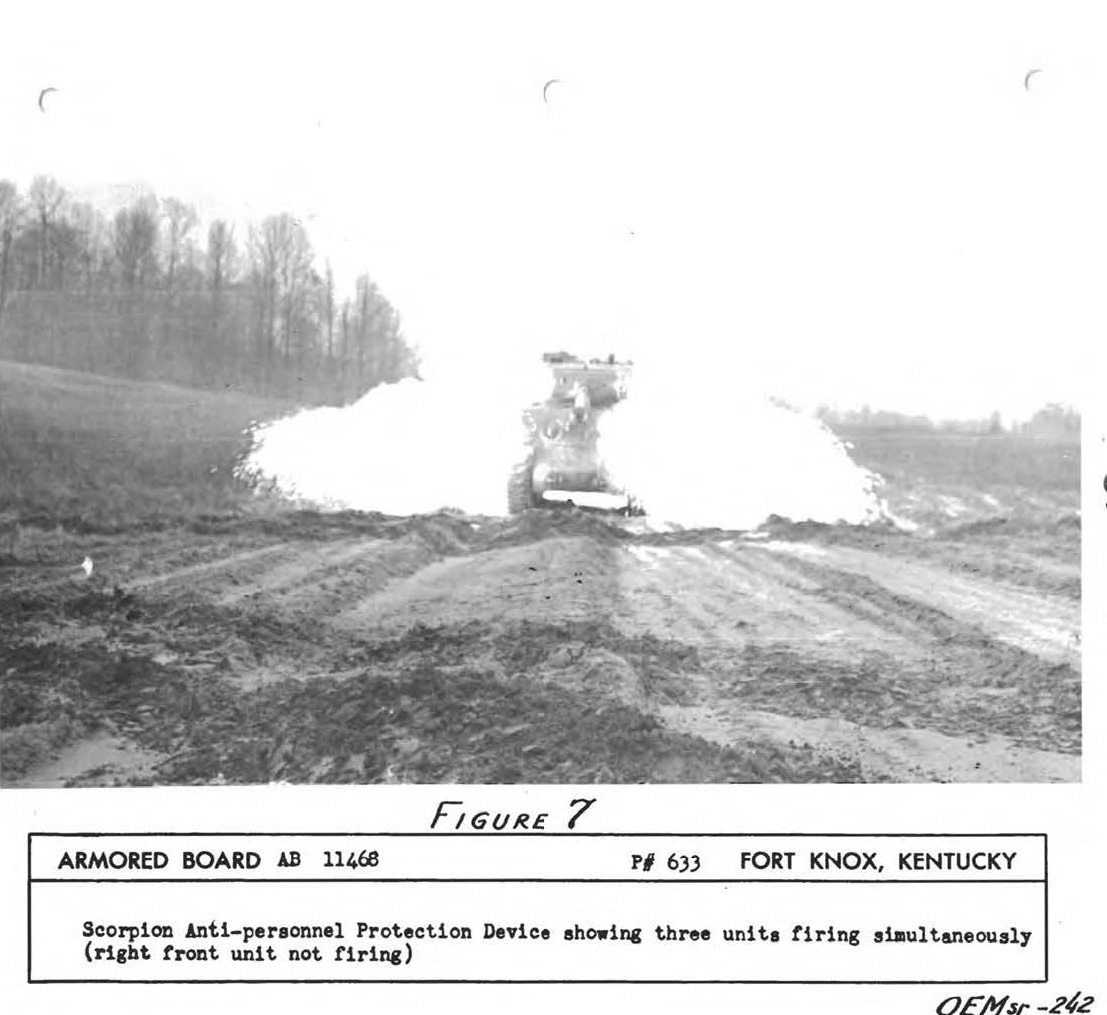
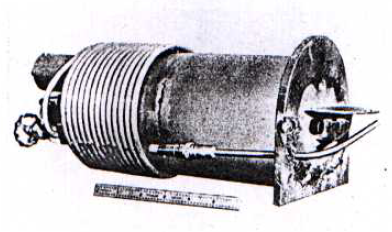
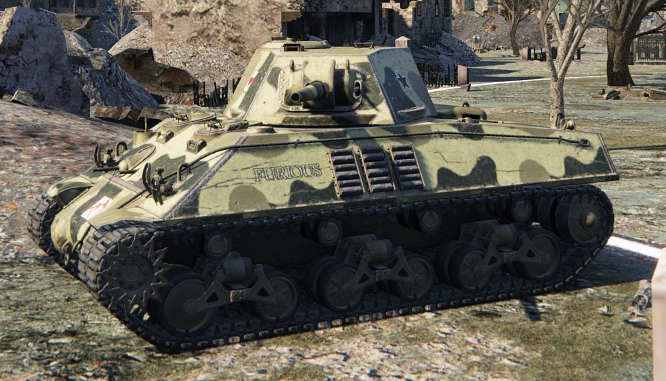
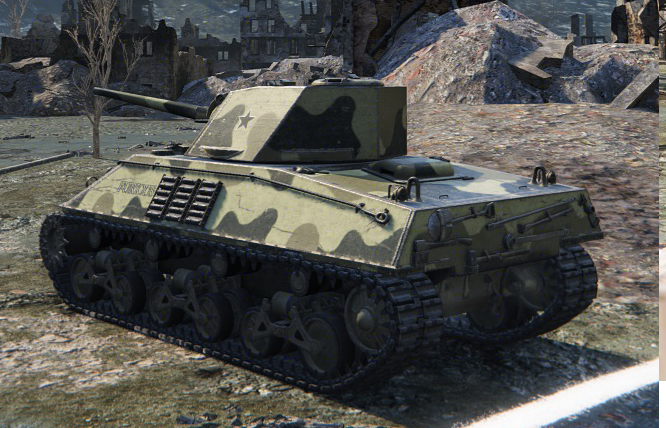










Oh Lord. I don’t know what to do as I have Lots of work to do next week summer. Plus the university exams are nearing, it will be a torture. I am already losing sleep maybe I should phentermine topamax weight loss to calm down a little bit. Hopefully it will all go well. Wish me luck.
I have pictures of the T121 and other sherman mounts, if you would like.
Alan
Thanks for the email, I’m checking the book out now, it’s amazing! Thank you!
Hilarious that the ‘M4 Improved’ – looks so much
like the basterd offspring of a Sherman – a frumpy sure,
but doable ol’ be-atch – who’d been caught, raped &
inseminated – by a mean-as, marauding Panther daddy…
Kind of like how the current US infantryman looks
so much like an SS-trooper from ~1944, with his
‘kraut-style’ helmet, camo-pattern uniform,
& assault rifle..
Yeah, except I’d say the T-34 had far more influence on the proposed improvement, this was a pretty early proposal.
T-34, or maybe its Brit equivalent, the Crusader,
which also featured similar sloped armour/Christie
chassis…
I have read the US tech report on Soviet tanks,
& they are fairly scathing as regards quality,
including those truly essential crew-use items,
& habitability/survivability functional aspects..
& Worf only knows what they made of the appalling
mechanical ‘marvels’ that made up the Crusader!
The Sherman was a piece of garbage. Bolted hull (instead of welded), too small, a firetrap. Even the Allies referred to them as Ronsons. They had the numbers and that’s all. There were military people in the USA who complained about it throughout. So let’s not do revisionist history to aggrandize the standing of this tank in keeping with that stupid war adventure “Fury”. The movie was a crock, and the tank was worse.
The ignorance in your comment speaks volumes about the commenter. I don’t think a single thing you posted is factually correct!
And yet it helped winning the war..
What “bolted hull”? There were never Shermans with “bolted hulls”. The early final drive housings were bolted together and bolted into place on either cast of welded hulls, but that was actually a advantage when it came to replacing a tranny or final drive. On a Panther it took days and a crane to change a tranny/final drive. The entire driver’s compartment had to be disassembled and the roof over the driver’s compartment removed. The Sherman could have the job done by the crew aided by a strong tree branch and a simple block and tackle in a couple of hours. It wasn’t a fire trap, it was actually safe for a tank. Panthers and Tigers could catch on fire driving down the road from gasoline leaking into their sealed hulls. You need to do some real research before posting such nonsense.
I clearly must make this extremely obvious for you,
WE WON THE WAR, DIDN’T WE?!
http://i.imgur.com/NbAzw5l.jpg
high speed reverse transmission.
They started to work on it near the end of 1943.
In Feb 1944 pilot models were running
Occupied 5 inches of space at the inboard end of the standard transmission and therefore requires a new shortened propeller shaft.
Box has a ratio of 1.16 to 1 and as a result the reverse speeds in a M4A3 for example are: –
First – 2.3 mph
Second – 6.0 mph
Third – 10.6 mph
Fourth – 17.2 mph
Fifth – 25.7 mph
The normal forward speeds are 2.7, 7, 12.5, 20, and 30 mph.
March 1944
they state it has been approved for production “technically” and will be applied to new production vehicles. Expected availability will be end quarter of 1944.
April 1944
OCM authorizing the production was about to be issued. Drawings released for production Three to six months before any tanks fitted are seen in service.
May 1944
OCM # 23548 has been issue which releases the high speed reverse for production and incorporation in all new production vehicles based on the M4 chassis.
(If one found said OCM minute it would include the project name and such)
Unit consists of a planetary gear box installed as such to complete reversal of the transmission. permitting reverse operation in all five forward ratios at approximately the same speeds as obtained in those ratios. For a 24 mph top speed, the maximum reverse would be 21 mph as an example.
Low level oil system incorporated in the reverse unit permits operation on 20 instead of 43 gallons of oil at present required. There is a radical reduction in operating temperature in consequence.
90% of the details of the existing transmission and final drivers are used in the new units.
Tests have shown the new unit is just as durable in all respects as it’s predecessor.
On the proving ground the unit was operated for 50 miles continuously in reverse. during 1500 miles of vehicle operation.
The “High-speed reverse–low level oil system transmission final drive assembly” is completely interchangeable wit the exception that the propeller shaft must by shortened by 5 inches. This is also desirable to reduce deflection of the shaft.
June 1944
All drawings have been cleared and production changes covered by Engineering change order 4614. Expected to be introduced during later part of third quarter or early fourth of this year.
November 1944
Due to various delays and postponement of production date, the high speed reverse has been abandoned and will not be part of the tank programme.
January 1945
It has been decided to revoke the decision to abandon the introduction of the high speed reverse transmission on the M4 series.
The original decision to abandon this project was not due to any engineering problems. It was influenced by two factors:
A) tooling problems to be dealt with, expected to cost $1,500,000
B) Large scale production of new design tanks, notable the M26E1 heavy tank.
Chrysler have been instructed to undertake the necessary tooling and planning involved, it is now expected that the change will be in effect for M4 series production during October or November 1945.
They did say it would be possible to push the Caterpillar engine upwards of 650 hp as well with some work.
They also had plans for a twin row radial diesel designed by the caterpillar tractor company.
Using the parts from G-200 engines the bottom cylinders of the radial type engine are omitted, in consequence it’s dimensions are very suitable for low silhouette vehicles. it is also considerably shorter than any of the 12-cylinder V-type engines. estimated to developed 750. hp
company never built it as they were not in a position to do so at the time.
It would have been nice to add that A65 Chrysler engine to the tanks. The sucker had serious power
Chris,
I know right, that thing was a beast! I wonder if any of the technology made it into their later automobile motors.
You’ll be happy to know i just forwarded full experimental A65 sherman engine specs to the website guy. My company had the information archived.
I have noticed even before I found your site that you can never find all of the best features of the M4 on one tank. I thought of something like a M4 Jumbo (heavy armor) with HVSS suspension and wide tracks, 17 pounder gun and twin six diesel engines. Or even better the turret from the M26 tank with a 90mm. IIRC their is a picture of an M4 with that turret on it. You can think of many variations of this theme. For instance upgunning a firefly with a 20 pounder. It would have possible to turn the M4 into a real monster from the factory or just a salvage yard. Of course the U.S. could have done something with the M6 heavy tank. We gave up on the M6 at the same time the USSR altered the KV1 into the JS2.
They did run a M4A3E8 for 2000+ miles of testing with a T26 turret and the 90mm.
They also designed and finished drawing plans for the a redone M6 heavy with a turret based off T26 turret and the 90mm + wet ammo stowage with the front hull redone (removal of the dual .50 cals and replaced with a ball mount like on the Sherman/M26)
It may or may not have been built, sources are not clear on this. Col. Robert J. Icks stated it was tested.
I personally always wanted an M4A3E2 Jumbo with an M1A2 76 mm gun, a flamethrower like in the M4A3R3 Zippo, an M1A1 Bulldozer, and a Chrysler A65
Hull machine gun linked to periscope mount.
http://i.imgur.com/krQqXCz.jpg
Whelm,
Thanks for the link, that’s a picture I had not seen before and will go great with this post!